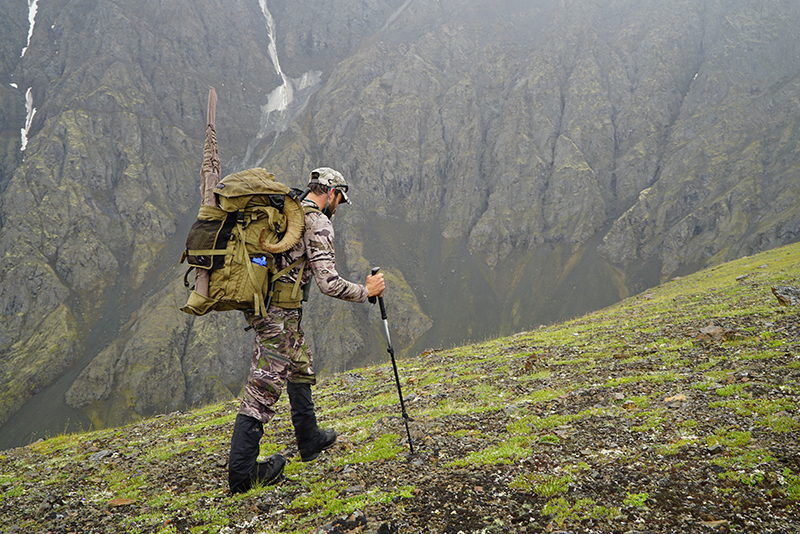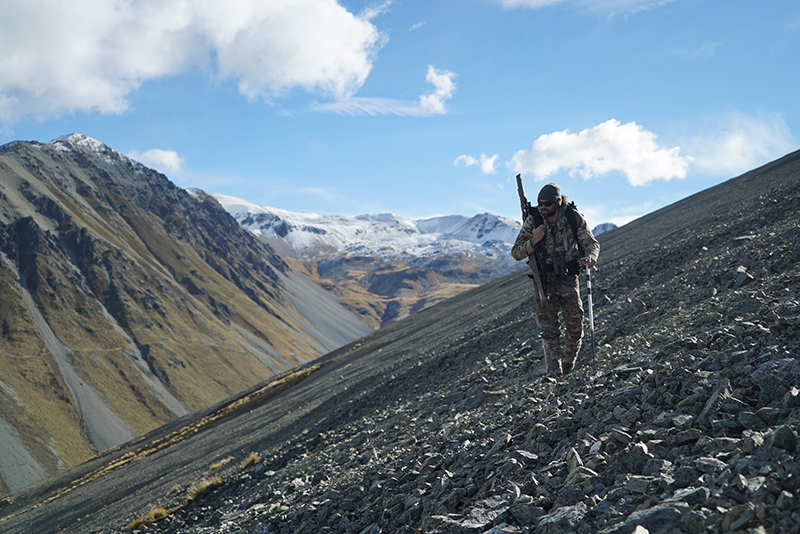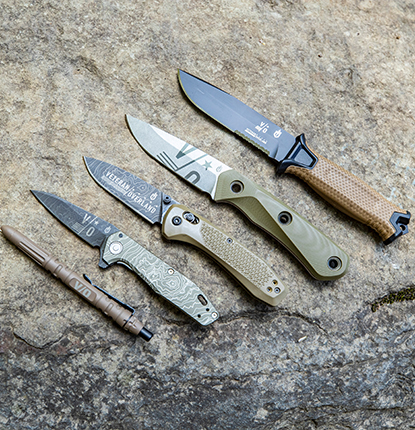Wild sheep and mountain goats live in some of the most vertical and inhospitable terrain in the world. From the steep mountains of Alaska and Montana, to the Alps of Europe, the Himalayas of Asia, and the southern alps of New Zealand. In this type of terrain, you find yourself being part mountaineer and part hunter. These five tips for mountaineer style hunting will get you to the top safely and back down in good order.
1. Sling and strap.
In this rough mountain terrain, you will want your hands free to help stabilize yourself on the climb. It is a good idea to have a sling for your rifle or bow, as well as a pack where the weapon can be attached. If carrying a bow, it is a good idea to have a sling that covers the strings. This will protect the strings from damage from the rocks.
When mountaineer style hunting in snow or ice it is a good idea to tether your rifle to your pack. Use a long piece of webbing with two small carabiners on each end. This will allow you to quickly attach and detach the rifle you can still have it slung over your shoulder, but if it slips off, the tether will keep it from sliding all the way down the steep mountain.

2. Always have a trekking pole.
Three points of contact is better than two. A trekking pole adds stability in loose terrain. It keeps you from slipping in the wrong place and takes some of the felt weight off your back from a heavy pack.
In snow, ice, or wet steep terrain, use an ice ax or trekking pole/ice ax combo as your trekking pole. This can be used for a self-arrest if you slip. This is where you slow your slide by applying pressure on the ax into the ground by rolling to your belly and pushing the head of the ax into the ground with the addition of your body weight till it catches and stops you. Kicking your toes into the ground while applying pressure to the ax can help slow your decent. Practice self-arrests when not hunting in a controlled area. This technique may save your life one day.
3. Never place all your weight in the same place. Putting two feet on the same rock can be dangerous. Always distribute weight and balance it between the trekking pole and your feet. Rocks can give loose and will send you tumbling if your weight is all in the same place.

4. When hiking with other people, stick together or stagger.
Be aware that one person a long way in front of the other can send rocks down. With enough distance, those rocks can gain dangerous speed. Always be aware of what and who is below you. If a rock does start to go, yell out “ROCK!” as soon as it goes. Keep it simple to that phrase and make sure others in the group know what yelling ROCK means before you head out. The single word ROCK allows the quickest reaction time for that specific danger. Things like look-out or other phrases can be misinterpreted and slow reaction time looking for the correct danger. Yelling, ROCK, implies the danger is from the person who yelled it and is most likely traveling downhill from them.
5. Stay warm.
In the mountains temperatures can change fast. For those nights where the cold cuts through your sleeping bag and keeps you awake, most people try wearing extra clothes in the bag but your temperature is regulated better by putting the extra clothes on the outside of the bag. Try crawling into your down or synthetic bag with minimal clothing on. Take your extra jacket or rain gear and zip it up. Now slide the jacket over the foot end of your sleeping bag. This helps your body warm the air inside the sleeping bag while blocking the cool air from outside. This same thing can be done on the top side as well. For those really cold nights when your bag just doesn’t seem to cut it layering the outside of your bag will provide extra warmth plus keep you clothes warmer when you go to put them on in the morning.






Remi has been hunting his entire life and is passionate about sharing his knowledge and adventures with others. Remi is a hunting guide, host of Apex Predator, co-host of Solo Hunters, and field editor for Western Hunter Magazine and Elk Hunter Magazine.